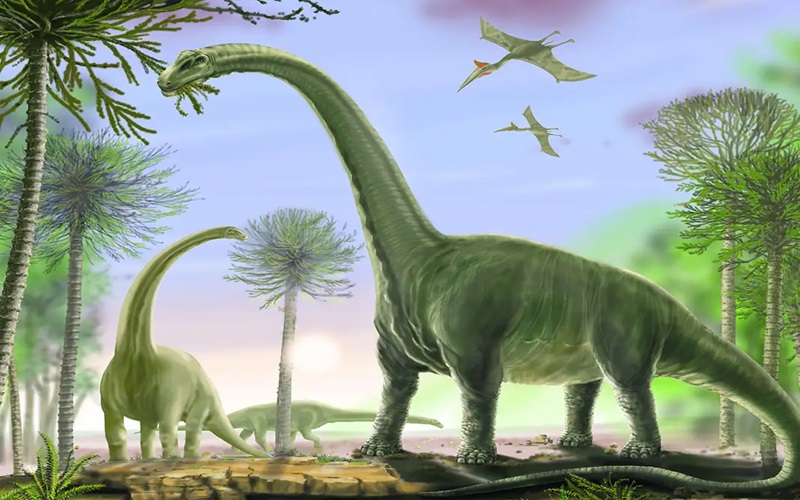A team of paleontologists has announced that they have discovered an entirely new genus as well as an entirely novel species in Titanosaurus, five decades after the remains of the animal were discovered inside the Egyptian desert. The dinosaur evolved around 75 million years ago in the area that is now Kharga’s oasis. Kharga. What is our knowledge about this species of dinosaur?
A medium-sized titanosaurus
The titanosaurs are among the biggest dinosaurs that have ever come across Earth. The impressive beasts belonged to the group of Saurischians, which was distinguished by their large elbows and huge legs. These gigantic creatures, which developed between 90 and 66 million years ago, consumed a lot of plants. Some specimens had lengths of over 30 meters; however, be aware that some were as large as a cow. The dinosaur we’re discussing here was situated somewhere in between the two extremes.
The remains of the species were initially discovered during the 1970s by German researchers working in the western desert of Egypt. But the fossil was lost to time for many years. An expert group recently had an entirely new look at the few fossils.
The results of the analysis revealed that this dinosaur belonged to a genus as well as a species previously unknown, Titanosaurus, which evolved over 75 million years. Researchers calculated its size using the peroneum and tibia. According to them, it was between 10 and 15 meters long.
Its name is Igai semkhu, which translates to “forgotten Lord of the Oasis” in the language of ancient Egypt and could be illustrated in hieroglyphs. “It has the name of an ancient god Egyptians were believed to revere in the desert from which it was derived,” says Matthew Lamanna, a paleontologist from the Carnegie Museum of Natural History.
A rare discovery on an unexplored continent
The study is generating excitement for paleontologists. This is why it fills the gap that we have not been able to fill with the past 30 million years in the dinosaur age in one of the most massive continental areas on Earth: Africa. It is true that paleontologists haven’t been exploring the area longer than in other regions. Additionally, although the continent has several Cretaceous rock formations, only a handful are readily accessible. Numerous possible fossil sites are overgrown with vegetation or the sands of deep deserts. This makes the recently identified titanosaurus of great importance.
Sadly, the only remnants of the titanosaurus (beat bones and vertebrae) are not enough for researchers to determine what the animal actually was like. In spite of this, it is still one of the more complete fossils located in Africa.

Email: mary@satprwire.com Phone: +44 20 4732 1986
Marry is a fitness freak in every manner and gives proper care about her health and of others. She is probably the best person we have at Daily Research News for covering articles from the Health sector. If not at work, she can be seen drinking a cup of coffee.



